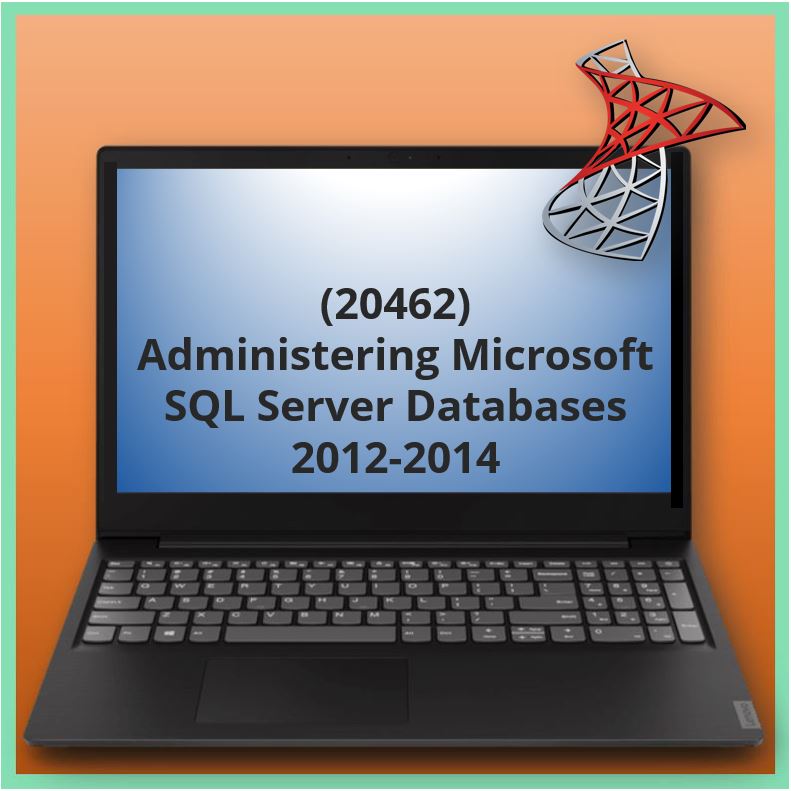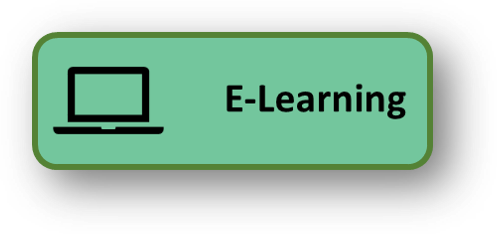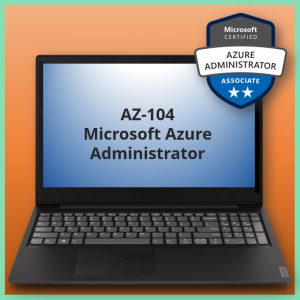Aangeboden leervormen
Administering Microsoft SQL Server Databases 2012-2014 (20462)
Course Description
This course provides students with the knowledge and skills to maintain a Microsoft SQL Server 2014 database. The course focuses on teaching individuals how to use SQL Server 2014 product features and tools related to maintaining a database.
Note: This course is designed for customers who are interested in learning SQL Server 2012 or SQL Server 2014. It covers the new features in SQL Server 2014, but also the important capabilities across the SQL Server data platform.
After completing this course, students will be able to:
• Plan and install SQL Server.
• Describe system databases, the physical structure of databases, and the most common configuration options related to them.
• Explain the concept of the transaction log and the SQL Server recovery models and implement different backup strategies that are available with SQL Server.
• Back up SQL Server databases.
• Restore SQL Server databases.
• Import and export data by using wizards, the bulk copy utility, and data-tier applications.
• Work with SQL Server security models, logins, users, and contained databases.
• Work with server roles and database roles.
• Use permissions to secure resources.
• Use SQL Server audit and Transparent Data Encryption.
• Work with SQL Server Agent to configure and execute jobs.
• Implement SQL Server Agent security, proxy accounts, and credentials.
• Configure database mail, alerts, and notifications.
• Create database maintenance plans.
• Use SQL Server Profiler, SQL Trace, and Distributed Relay.
• Use Distributed Management Views and configure data collection.

Voor wie
The primary audience for this course is individuals who administer and maintain SQL Server databases. These individuals perform database administration and maintenance as their primary area of responsibility, or work in environments where databases play a key role in their primary job.
The secondary audience for this course is individuals who develop applications that deliver content from SQL Server databases.
Programma
Voor het programma van E-Learning >>>KLIK HIER<<<
Module 1: Installing SQL Server 2014
This module introduces the SQL Server 2014 platform. It describes the components, editions, and versions of SQL Server 2014, SQL Server services and configuration options, and service accounts. The module also explains how to assess resource requirements for SQL Server 2014 and how to install SQL Server 2014.
Lessons
· Introduction to the SQL Server Platform
· SQL Server Services and Configuration Options
· Considerations for Installing SQL Server
· Installing SQL Server 2014
Lab : Installing SQL Server 2014
· Performing Pre-installation Stress Tests
· Installing a SQL Server Instance
· Performing Post-Installation Checks
After completing this module, you will be able to:
· Describe the SQL Server Platform.
· Configure SQL Server services.
· Perform pre-installation checks and assess resource requirements.
· Install SQL Server 2014.
Module 2: Working with Databases
This module describes he preinstalled system databases, the physical structure of databases, and the most common configuration options related to them.
Lessons
· Overview of SQL Server Databases
· Creating Databases
· Using Database Files and Filegroups
· Moving Database Files
· Buffer Pool Extension
Lab : Creating and Configuring Databases
· Creating a Storage Pool
· Adjusting tempdb Configuration
· Creating and Configuring a Database
· Attaching a Database
· Using Buffer Pool Extension
After completing this module, you will be able to:
· Describe the role and structure of SQL Server databases.
· Create, configure, and alter databases.
· Use files and filegroups.
· Move database files.
· Describe the Buffer Pool Extension feature.
Module 3: SQL Server 2014 Recovery Models
In this module, you will consider how to create a strategy that is aligned with organizational needs and see how the transaction logging capabilities of Microsoft SQL Server can help you to achieve an appropriate outcome.
Lessons
· Backup Strategies
· Understanding SQL Server Transaction Logging
· Planning a SQL Server Backup Strategy
Lab : Understanding SQL Server Recovery Models
· Planning a Backup Strategy
· Configuring Recovery Models
· Reviewing Recovery Models and Strategy
After completing this module, you will be able to:
· Describe the various backup strategies that SQL Server provides.
· Describe how database transaction logs function.
· Plan a SQL Server backup strategy.
Module 4: Backup of SQL Server 2014 Databases
In this module, you will explore the key backup types in more depth and learn how to implement the backups. You will also see how to apply options that affect the way that the backups work.
Lessons
· Backing up Databases and Transaction Logs
· Managing Database Backups
· Working with Backup Options
Lab : Backing Up SQL Server Databases
· Investigating Backup Compression
· Performing Transaction Log Backups
· Performing Differential Backups
· Performing Copy-Only Backups
· Performing Filegroup Backups
After completing this module, you will be able to:
· Perform backups of SQL Server databases and transaction logs.
· Manage backup sets.
· Describe the advanced backup options.
Module 5: Restoring SQL Server 2014 Databases
In this module, you will see how to restore user and system databases and how to implement point-in-time recovery.
Lessons
· Understanding the Restore Process
· Restoring Databases
· Working with Point-in-Time Recovery
· Restoring System Databases and Individual Files
Lab : Restoring SQL Server Databases
· Determining a Restore Strategy
· Restoring a Database
· Using STANDBY Mode
After completing this module, you will be able to:
· Explain the database restore process.
· Restore databases.
· Describe the concept of point-in-time recovery.
· Describe the advanced concepts of restoring databases.
Module 6: Importing and Exporting Data
This module covers the use of the import/export wizards and explains how they relate to SSIS. It also introduces BCP and BULK INSERT.
Lessons
· Transferring Data To/From SQL Server
· Importing and Exporting Table Data
· Inserting Data in Bulk
· Deploying and Upgrading Data-tier Applications
Lab : Importing and Exporting Data
· Importing an Excel Spreadsheet
· Importing a CSV File
· Creating and Testing an Extraction Package
· Creating and Deploying a Data-tier Application
· Comparing Loading Performance
After completing this module, you will be able to:
· Transfer data to and from SQL Server.
· Import and export table data.
· Insert data in bulk and optimize the bulk insert process.
· Use DACs to import and export database applications.
Module 7: Authenticating and Authorizing Users
This module covers SQL Server security models, logins, users, and contained databases.
Lessons
· Authenticating Connections to SQL Server
· Authorizing Logins to Access Databases
· Authorization Across Servers
· Partially Contained Databases
Lab : Authenticating Users
· Creating Logins
· Correcting an Application Login Issue
· Creating Database Users
· Correcting Access to a Restored Database
After completing this module, you will be able to:
· Describe how SQL Server authenticates connections.
· Describe how logins are authorized to access databases.
· Explain the requirements for authorization across servers.
· Describe the benefits of using contained databases.
Module 8: Assigning Server and Database Roles
This module covers fixed server roles, user-defined server roles, fixed database roles, and user-defined database roles.
Lessons
· Working with Server Roles
· Working with Fixed Database Roles
· Creating User-defined Database Roles
Lab : Assigning Server and Database Roles
· Assigning Server Roles
· Assigning Fixed Database Roles
· Creating and Assigning User-defined Database Roles
· Checking Role Assignments
After completing this module, you will be able to:
· Assign fixed server roles.
· Configure fixed database roles.
· Create and assign user-defined database roles.
Module 9: Authorizing Users to Access Resources
This module covers permissions and the assignment of permissions.
Lessons
· Authorizing User Access to Objects
· Authorizing Users to Execute Code
· Configuring Permissions at the Schema Level
Lab : Authorizing Users to Access Resources
· Assigning Schema-level Permissions
· Assigning Object-level Permissions
· Testing Permissions
After completing this module, you will be able to:
· Grant, revoke, and deny permissions on objects.
· Configure permissions on executable code.
· Configure permissions at schema level.
Module 10: Protecting Data by Using Encryption and Auditing
This module describes the available options for auditing in SQL Server, how to use and manage the SQL Server audit feature, and how to implement encryption.
Lessons
· Options for Auditing Data Access in SQL Server
· Implementing SQL Server Audit
· Managing SQL Server Audit
· Protecting Data by Using Encryption
Lab : Using Auditing and Encryption
· Determining Audit Configuration and Creating an Audit
· Creating Server Audit Specifications
· Creating Database Audit Specifications
· Testing Audit Functionality
· Using Transparent Data Encryption
After completing this module, you will be able to:
· Describe options for auditing data access.
· Implement SQL Server audit.
· Manage SQL Server audit.
· Implement Transparent Data Encryption.
Module 11: Automating SQL Server 2014 Management
This module describes how to use SQL Server Agent for automation. It also explains the benefits of using master and target servers to centralize the administration of automation.
Lessons
· Automating SQL Server Management
· Working with SQL Server Agent
· Managing SQL Server Agent Jobs
· Multi-Server Management
Lab : Automating SQL Server Management
· Creating a Job
· Scheduling a Job
· Troubleshooting a Failing Job
· Creating a Multi-Server Job
After completing this module, you will be able to:
· Describe methods for automating SQL Server management.
· Configure jobs, job step types, and schedules.
· Manage SQL Server Agent jobs.
· Configure master and target servers.
Module 12: Configuring Security for SQL Server Agent
This module describes the considerations for SQL Server Agent security, including proxy accounts and credentials.
Lessons
· Understanding SQL Server Agent Security
· Configuring Credentials
· Configuring Proxy Server Accounts
Lab : Configuring Security for SQL Server Agent
· Troubleshooting Job Execution Failure
· Resolving Security Issues
· Performing Further Troubleshooting
After completing this module, you will be able to:
· Describe the security context for SQL Server Agent jobs.
· Configure credentials.
· Configure proxy accounts.
Module 13: Monitoring SQL Server 2014 by Using Alerts and Notifications
This module covers the configuration of database mail, alerts, and notifications.
Lessons
· Configuring Database Mail
· Monitoring SQL Server Errors
· Configuring Operators, Alerts, and Notifications
Lab : Monitoring SQL Server by Using Alerts and Notifications
· Configuring Database Mail
· Implementing Notifications
· Implementing Alerts
After completing this module, you will be able to:
· Configure Database Mail.
· Monitor SQL Server errors.
· Configure operators, alerts, and notifications.
Module 14: Performing Ongoing Database Maintenance
This module covers database maintenance plans.
Lessons
· Ensuring Database Integrity
· Maintaining Indexes
· Automating Routine Database Maintenance
Lab : Performing Ongoing Database Maintenance
· Check Database Integrity by Using DBCC CHECKDB
· Correcting Index Fragmentation
· Creating a Database Maintenance Plan
· Investigating Table Lock Performance
After completing this module, you will be able to:
· Maintain database integrity by using DBCC CHECKDB.
· Maintain indexes.
· Configure database maintenance plans.
Module 15: Tracing Access to SQL Server 2014
This module describes how to use SQL Server Profiler and SQL Trace stored procedures to capture information about SQL Server. It also describes how to use Distributed Replay to capture trace information from multiple servers and how to monitor locking.
Lessons
· Capturing Activity by Using SQL Server Profiler
· Improving Performance by Using the Database Engine Tuning Advisor
· Working with Tracing Options
· Distributed Replay
· Monitoring Locks
Lab : Tracing Access to SQL Server
· Capturing a Trace by Using SQL Server Profiler
· Analyzing a Trace by Using the Database Engine Tuning Advisor
· Configuring SQL Trace
After completing this module, you will be able to:
· Configure SQL Server Profiler traces and review captured traces.
· Use the Database Engine Tuning Advisor.
· Understand SQL Server advanced tracing concepts.
· Use Distributed Replay.
· Monitor locking.
Module 16: Monitoring SQL Server 2014
This module explains how to use Distributed Management Views to monitor SQL Server. It also describes how to configure data collection and the SQL Server Utility.
Lessons
· Monitoring Activity
· Capturing and Managing Performance Data
· Analyzing Collected Performance Data
· SQL Server Utility
Lab : Monitoring SQL Server
· Creating a Utility Control Point
· Configuring a Health Policy
· Configuring Instances for Data Collection
· Working with Data Collector Reports
After completing this module, you will be able to:
· Monitor activity in SQL Server.
· Configure data collection.
· View reports from data collection.
· Configure a SQL Server Utility.
Voorkennis
This course requires that you meet the following prerequisites:
· Basic knowledge of the Microsoft Windows operating system and its core functionality.
· Working knowledge of Transact-SQL.
· Working knowledge of relational databases.
· Some experience with database design.
Students who attend this training can meet the prerequisites by attending the following courses, or obtaining equivalent knowledge and skills:
· 20461C: Querying Microsoft SQL Server
Examen
Microsoft Exam 70-462: Administering Microsoft SQL Server Databases
Duur training
Open leercentrum: 5 dagen
E-Learning: 90 dagen









